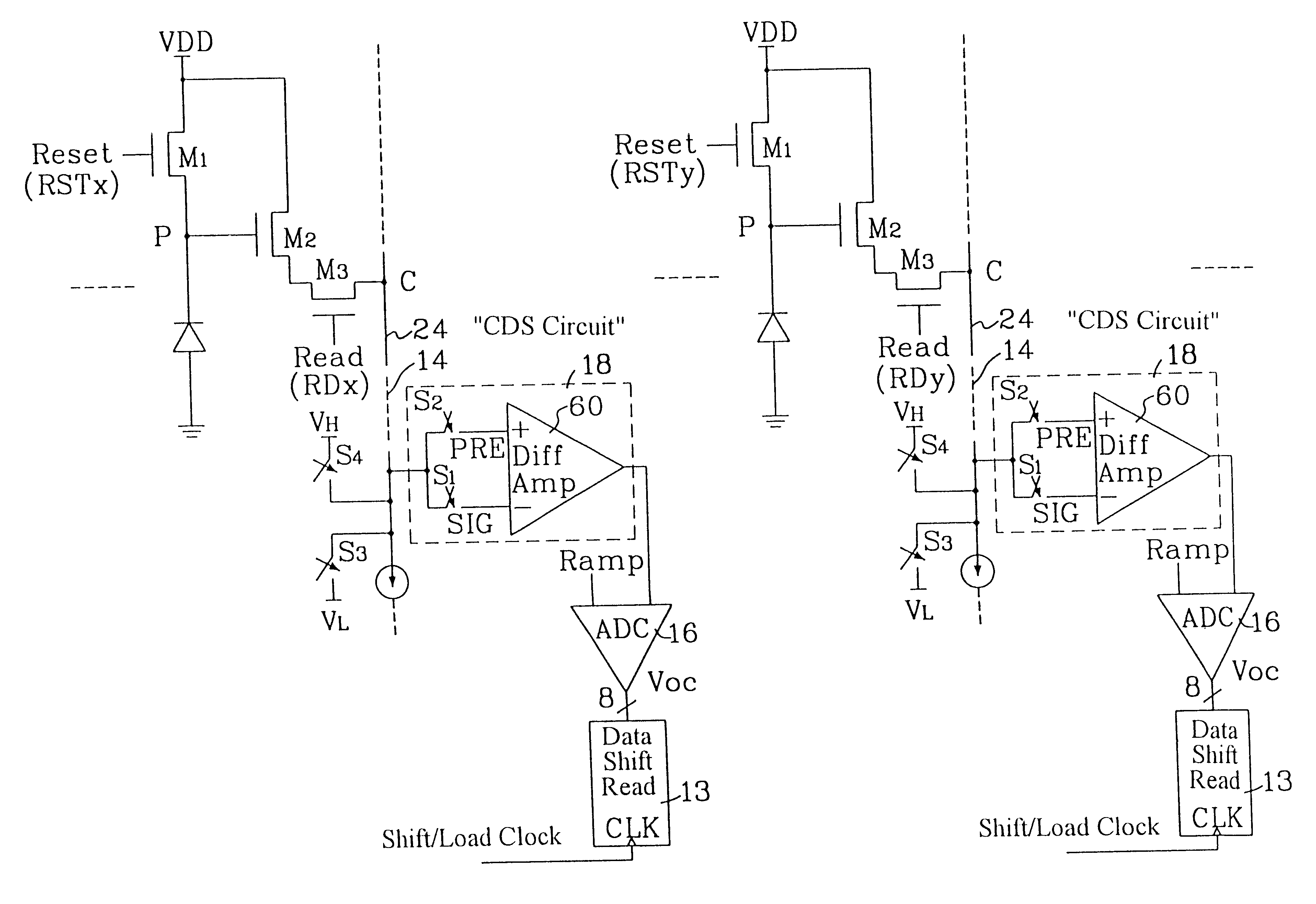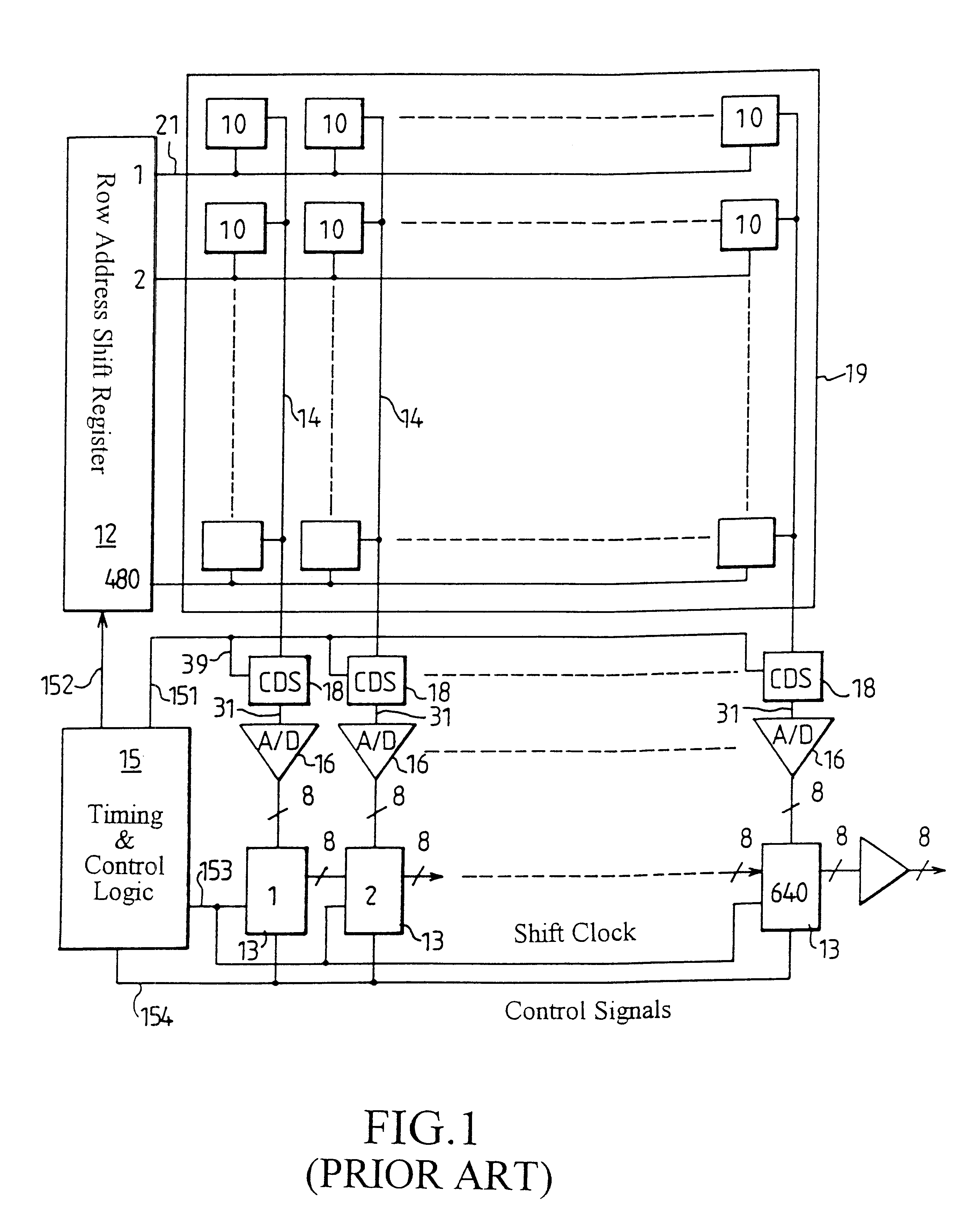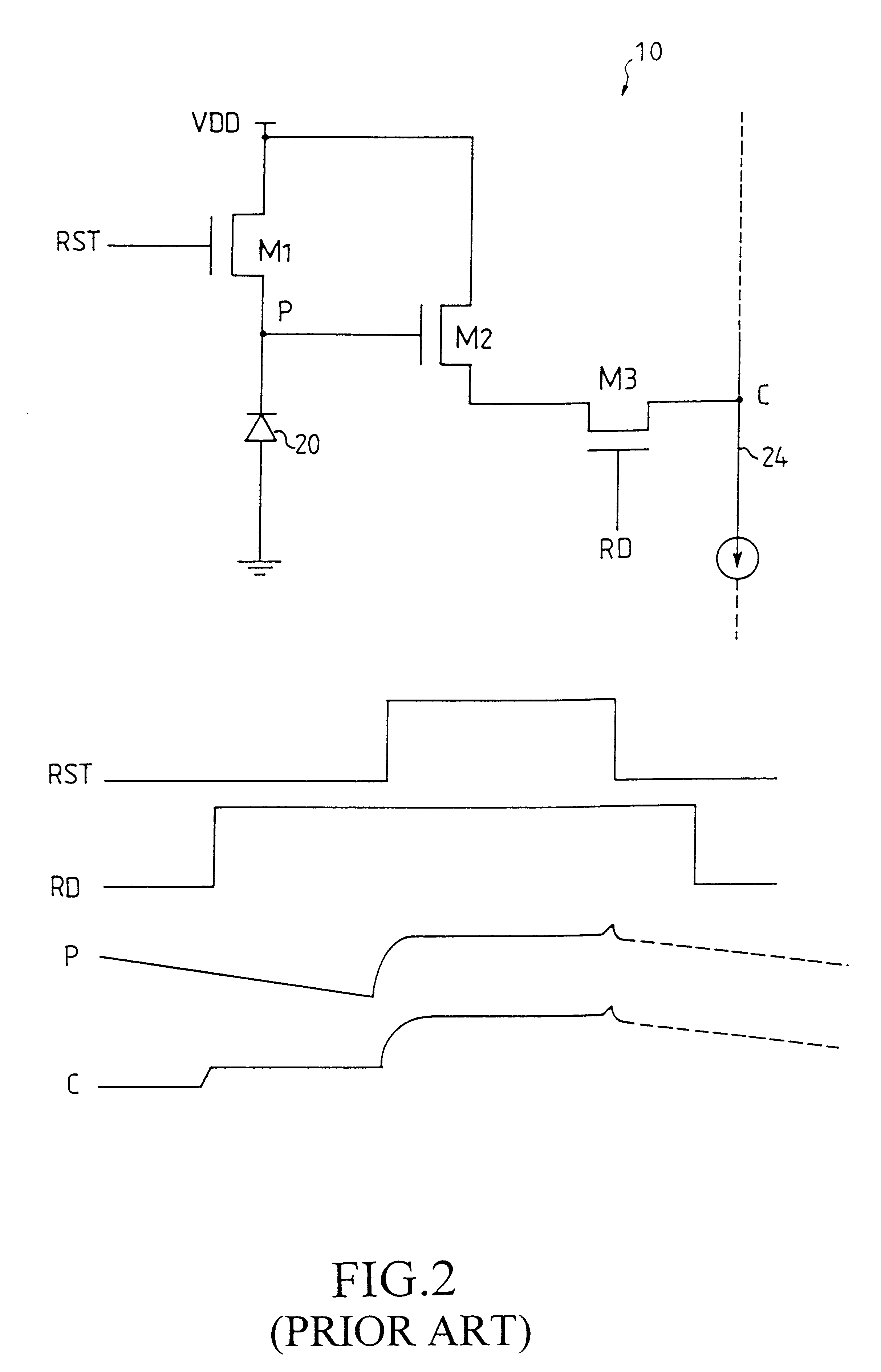Autocalibration of the A/D converter within the CMOS type image sensor
a technology of a/d converter and image sensor, which is applied in the direction of code conversion, instruments, television systems, etc., can solve the problems of varying degrees of parasitic effects of analog signals generated by each light detecting element, high cost of integrated circuit chips containing a ccd image sensor, etc., and achieve the effect of minimizing parasitic effects and distortion of a/d converters and cds circuits
- Summary
- Abstract
- Description
- Claims
- Application Information
AI Technical Summary
Benefits of technology
Problems solved by technology
Method used
Image
Examples
Embodiment Construction
FIG. 1 illustrates the architecture of a 640.times.480 CMOS active pixels image sensor formed on a single integrated circuit chip. The image sensor core 19 comprises a two-dimensional pixel array of light detecting elements 10 which include identical circuitry shown in FIG. 2. A row address shift register 12, with its control signals coming from the timing / control logic 15, is connected to the core array 19 to address one row at a time. The output of shift register 12 addresses the core array 19 row-by-row to read the analog signal into the column lines 14 according to a predetermined frame rate timing requirement.
In one embodiment, each A / D converter 16 is connected to receive an analog signal, via a well-known correlated-double sampling (CDS) circuit 18, from corresponding column line 14 and convert each analog signal to a digital signal representative of gray level of light intensity detected by the respective pixel element 10. For example, if an eight-bit A / D conversion is imple...
PUM
 Login to View More
Login to View More Abstract
Description
Claims
Application Information
 Login to View More
Login to View More - R&D
- Intellectual Property
- Life Sciences
- Materials
- Tech Scout
- Unparalleled Data Quality
- Higher Quality Content
- 60% Fewer Hallucinations
Browse by: Latest US Patents, China's latest patents, Technical Efficacy Thesaurus, Application Domain, Technology Topic, Popular Technical Reports.
© 2025 PatSnap. All rights reserved.Legal|Privacy policy|Modern Slavery Act Transparency Statement|Sitemap|About US| Contact US: help@patsnap.com



